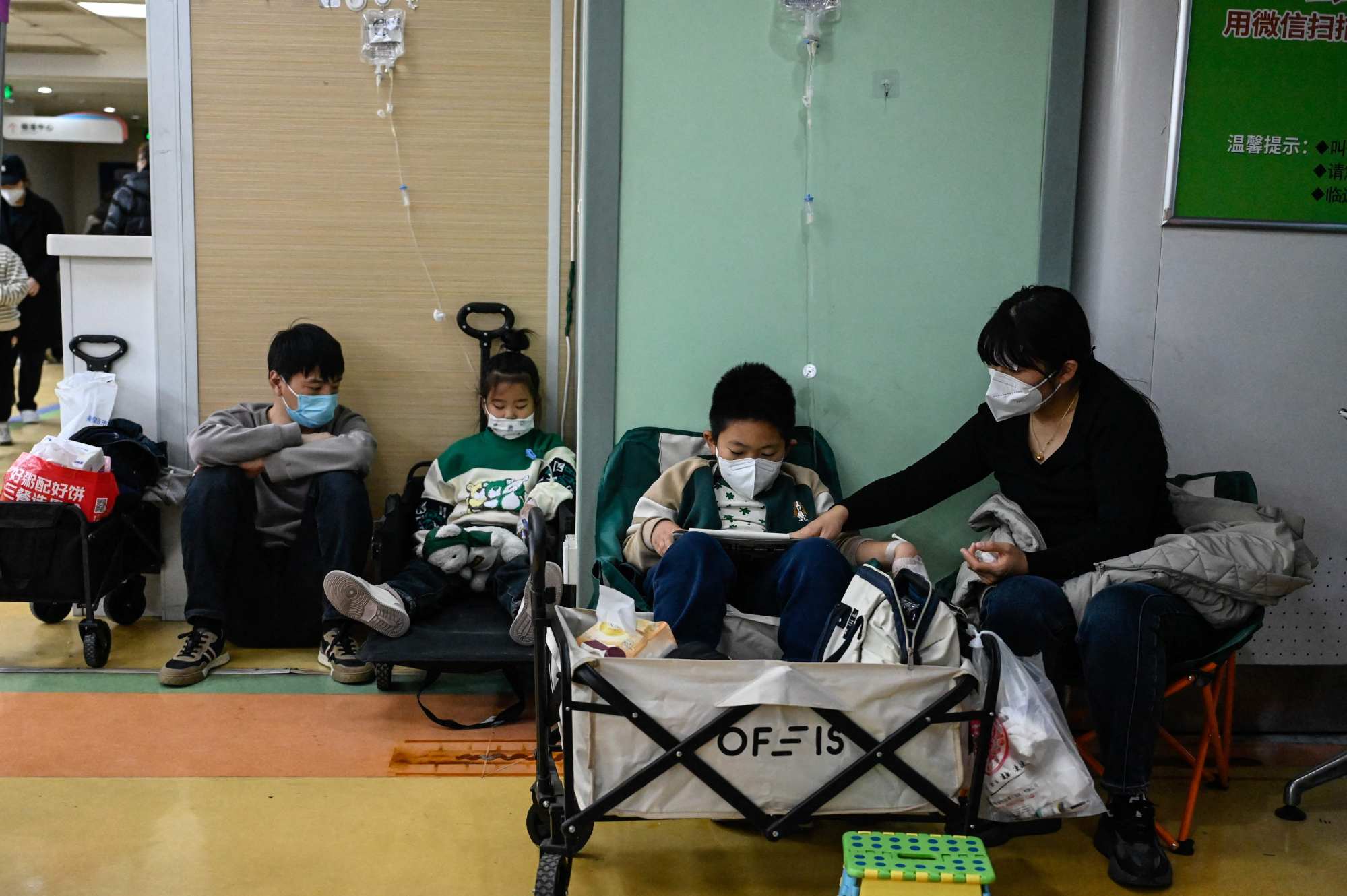
China gets WHO note seeking details after surge in respiratory illness among children
- WHO request follows reports about overcrowded fever clinics, hospital emergency rooms and children’s wards as multiple winter pathogens circulate
- Chinese officials and experts have so far attributed the surge in northern China to the lifting of Covid-19 measures
The request followed reports and social media posts about overcrowded fever clinics, hospital emergency rooms and children’s wards due to a surge in respiratory illness attributed to multiple pathogens.
The WHO cited China’s National Health Commission as saying on November 13 that the surge had been caused by pathogens including influenza, mycoplasma pneumoniae and respiratory syncytial virus (RSV), all common pathogens behind winter respiratory disease outbreaks, as well as Sars-CoV-2, the virus that causes Covid-19.
WHO warns of ‘concerning’ Covid-19 trends ahead of winter
In its statement on Wednesday, the WHO said it had requested “additional epidemiologic and clinical information, as well as laboratory results” relating to clusters of “undiagnosed pneumonia in children in northern China”, as reported on Tuesday by media and the Programme for Monitoring Emerging Diseases or ProMED, the world’s largest publicly available system tracking infectious disease outbreaks.
“It is unclear if these are associated with the overall increase in respiratory infections previously reported by Chinese authorities, or separate events,” the WHO said, as it asked the Chinese government to provide more information about the circulation of the known pathogens.
Though Covid-19 is among the circulating pathogens, it has not been named as a top cause for the surge.
In September and October, the mycoplasma pneumoniae bacteria was the major cause of respiratory diseases among children across China, with many hospitals reporting a spike in young patients seeking treatment.
The bacteria causes upper respiratory tract infection symptoms such as fevers, coughs, sore throats and headaches, with only 5 to 10 per cent of cases expected to develop into atypical pneumonia.
However, paediatrics expert Wei Tianli at the Beijing Friendship Hospital was quoted by the city’s health authorities as saying that while mycoplasma pneumoniae infections surged every three to five years, the symptoms had become more serious this time. The severity could be a result of the bacteria developing drug resistance against the antibiotic azithromycin, Wei said.
Some children can also become seriously sick when they are infected with more than one pathogen at once.
Mycoplasma pneumoniae cases began to drop after peaking in October, but then infections caused by RSV, adenovirus and influenza viruses began to rise.
Wang Quanyi, deputy director of Beijing’s Centre for Disease Control and Prevention, said these had become the top three pathogens causing respiratory illness among children, with mycoplasma pneumoniae now at number four.
“Due to the simultaneous circulation of multiple pathogens, the total number of infections are expected to rise and the number will stay at a high level for a longer time. There will be rising demand for medical care. Healthcare institutions should be prepared for the pressure,” Wang was quoted as saying by Beijing News on Tuesday.

Paediatric wards have already been overloaded since September. A hospital affiliated to the Tianjin University of Traditional Chinese Medicine said all paediatric department staff had to cancel their holidays, with administrative officials working in shifts for round-the-clock coordination of resources to cope with the surge, digital outlet Thepaper.cn reported.
The Civil Aviation General Hospital in Beijing also said last week that the paediatric outpatient clinic had recorded 550-650 visits daily, a rise of 30 to 50 per cent compared with the same period last year.
The hospitals said some of the patients presented with simultaneous mycoplasma pneumoniae, influenza and Covid-19 infections, or had contracted all three within a short period of time.
The National Health Commission said it had ordered local hospitals to strengthen their capability to grade patients according to the severity of infection, for better identification of the seriously ill.
It also advised patients with mild symptoms to first seek help from lower-tier healthcare institutions instead of overwhelming big hospitals.

